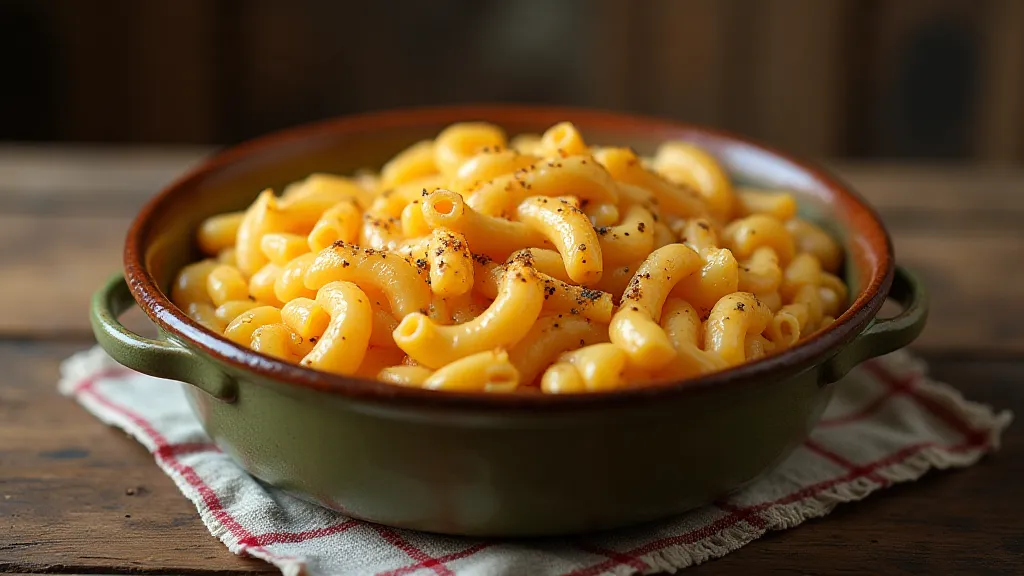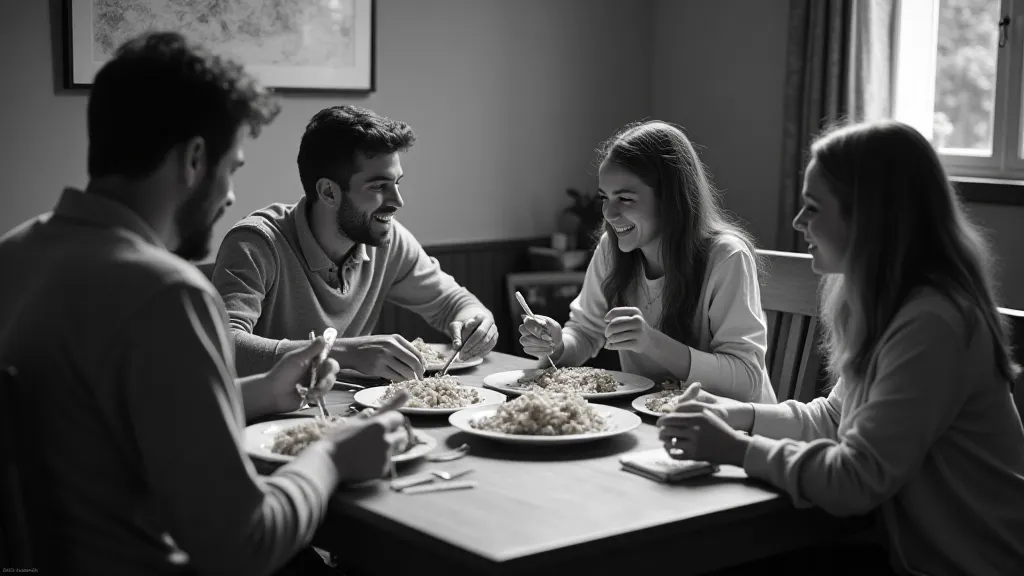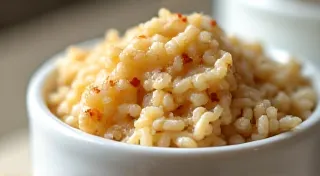Macaroni and Cheese: A Budget-Friendly Family Favorite
Few dishes evoke the warmth of childhood and the comfort of home like macaroni and cheese. But did you know this beloved classic played a vital role in sustaining families during the Great Depression? While the modern, boxed version is readily available, its roots lie in resourceful cooking and making the most of scarce ingredients. Let's delve into the history of macaroni and cheese, its evolution during the Depression era, and share a traditional recipe to experience a taste of the past.
The Origins of Macaroni and Cheese
Macaroni and cheese isn’t solely a product of the Great Depression. Similar recipes have appeared in European cookbooks for centuries. A version resembling modern macaroni and cheese first appeared in 14th-century Naples. Thomas Jefferson, ever the culinary enthusiast, brought a macaroni and cheese recipe back to the United States after his time as Minister to France in 1784. However, it remained largely a dish for the wealthy – a luxury item due to the cost of cheese and the relative rarity of pasta. The challenge wasn't just obtaining the ingredients, but the sheer extravagance of using such valuable resources for a simple dish.
Before the Depression, resourceful cooks were always looking for ways to stretch ingredients and avoid waste. Many families relied on simple, hearty meals that could feed a family on a tight budget. While macaroni and cheese existed in more upscale circles, the principles of resourceful cooking that would define its Depression-era popularity were already well established.

Macaroni and Cheese During the Great Depression: Frugality and Innovation
The Great Depression, spanning the 1930s, fundamentally changed how Americans ate. With widespread unemployment and devastating poverty, every scrap of food had to be stretched as far as possible. Macaroni and cheese, thankfully, was perfectly suited to this challenge. Macaroni, though not always readily available, was generally cheaper than meat or fresh vegetables. Cheese, while still a valuable commodity, could be used sparingly, and the dish could be bulked up with additions like milk, flour, and even vegetables scavenged from gardens.
The core principle was finding ways to make a little go a long way. This spirit of resourcefulness extended to all aspects of meal preparation. Sometimes, even seemingly inedible parts of food were utilized, reflecting a deep respect for the value of food. For instance, scraps and leftovers were rarely discarded; they were often incorporated into stews or other dishes. This understanding of necessity drove innovation and creativity in the kitchen.
Recipes from the era often omitted ingredients we consider essential today. Butter was often substituted with lard or even rendered bacon fat to add richness. Milk was a precious resource, so the cheese had to carry the dish. While some families managed to acquire good quality cheddar, many relied on less expensive cheese options and stretched them as far as possible. The constant need to adapt and improvise meant that recipes varied significantly from household to household.
It wasn’t just about saving money; it was about survival. Many families would supplement their meals with whatever they could forage or grow in their own gardens. The need to make every meal filling and nutritious drove innovation and creativity. Even a simple dish like macaroni and cheese became a canvas for ingenuity, with cooks experimenting with different techniques and ingredients to create something satisfying and affordable.
Beyond simply stretching ingredients, families often looked for ways to transform seemingly humble components into something special. Just as cooks would invent new ways to utilize scraps and leftovers, they’s also discover clever ways to create a more substantial meal. This ingenuity wasn't confined to just macaroni and cheese; it extended to all aspects of meal planning. Some meals, like Water Pie, demonstrate the extreme lengths families went to in order to avoid waste and create a filling meal.
A Traditional Depression-Era Macaroni and Cheese Recipe
This recipe aims to recreate the simplicity and resourcefulness of a Depression-era meal. Keep in mind that ingredient availability and quality varied greatly, so feel free to adapt it based on what you have available.
Ingredients:
- 1 pound elbow macaroni
- 2 cups milk (whole milk preferred, but any milk will do)
- 1 ½ cups shredded cheese (cheddar, or a combination of available cheeses)
- 2 tablespoons butter (or lard/bacon fat)
- 2 tablespoons flour
- Salt and pepper to taste
Instructions:
- Preheat oven to 350°F (175°C). Grease a casserole dish.
- Cook macaroni according to package directions, but slightly undercook it.
- While macaroni is cooking, melt the butter in a saucepan. Stir in the flour and cook for 1-2 minutes, creating a roux.
- Gradually whisk in the milk until smooth. Bring to a simmer, stirring constantly.
- Reduce heat and stir in the cheese until melted and smooth. Season with salt and pepper.
- Add the cooked macaroni to the cheese sauce and stir to combine.
- Pour the mixture into the prepared casserole dish.
- Bake for 20-25 minutes, or until bubbly and golden brown.

Macaroni and Cheese’s Enduring Legacy
The Great Depression may be a distant memory, but the legacy of resourcefulness embedded in classic recipes like macaroni and cheese remains. While modern versions have become more complex and indulgent, the core principle of stretching ingredients and creating a satisfying meal for a family continues to resonate. This simple dish offers a delicious taste of the past and a reminder of the strength and resilience of those who lived through challenging times.
The innovative cooking techniques developed during the Depression, born out of necessity, have left a lasting impact on American cuisine. They represent a profound respect for food and a dedication to making the most of every ingredient. The era also fostered a spirit of creativity and improvisation, encouraging cooks to experiment with flavors and techniques to create something truly special.
Beyond the specific dishes, the Depression fostered a broader cultural shift towards frugality and sustainability. These values continue to influence our food choices today, as we seek to reduce waste and embrace more conscious eating habits. The challenges faced during that era ultimately led to a greater appreciation for the importance of food security and the value of community.
The ingenuity employed by Depression-era cooks wasn't limited to stretching ingredients; it also extended to utilizing every part of the animal. Many recipes, like Creamed Chipped Beef, utilized often-discarded cuts of meat, transforming them into surprisingly flavorful dishes. Similarly, resourceful cooks found ways to incorporate even the smallest scraps into other meals, minimizing waste and maximizing nourishment.
And if those resources proved especially scarce, cooks developed creative ways to utilize other ingredients. Sometimes, these dishes weren’s always palatable by today’s standards, but they served a vital purpose in ensuring that families had enough to eat. Even leftovers and seemingly inedible parts of food were incorporated into stews or other dishes.
This commitment to resourcefulness also influenced the way families preserved and stored food. Canning, pickling, and drying were common practices, allowing families to extend the shelf life of seasonal produce and meat. The ability to store food efficiently was essential for ensuring a steady supply of nourishment throughout the year.
The legacy of these practices extends beyond the recipes themselves. They represent a broader cultural shift towards frugality, sustainability, and a deep respect for the value of food. And sometimes, the most resourceful cooks would make an incredibly simple dish, like Scrapple, using the lowest quality meat scraps.
The enduring popularity of macaroni and cheese reflects not only its deliciousness, but also its symbolic significance as a reminder of a time when resourcefulness, resilience, and a sense of community were essential for survival. It's a dish that speaks to the enduring human spirit and our ability to find comfort and nourishment even in the most challenging circumstances.






